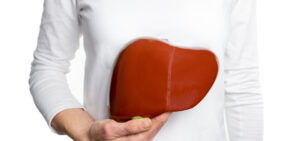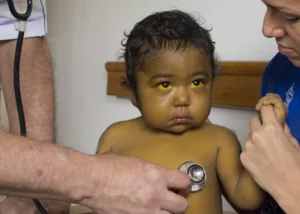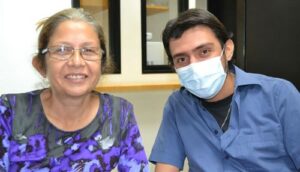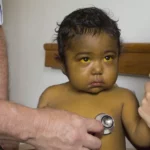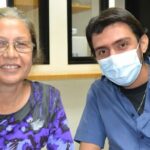Liver disease can be difficult to detect because of the lack of symptoms that are usually present in most people. According to a recent study, 6% to 7% of the world’s population has liver fibrosis and does not know it because they have no symptoms.
A liver disease can develop differently in each person, in some cases it will be faster than in others as it depends on several factors; for example: diet, exercise or genetics.
Symptoms begin to appear when the liver becomes more irritated and inflamed. As we said in a previous article, fibrosis is the first stage in a disease affecting the liver. Being one of the first signs, it is a condition that can be reversed if detected early.
However, if the disease is not detected early and lasts over a period of months and years, more significant advanced fibrosis can occur, which can then progress to cirrhosis.
What are the first discomforts related to liver disease?
Occasionally, people with fibrosis may experience:
- A dull or aching pain in the upper right side of the belly (lower right side of the ribs): patients usually characterize this as a persistent throbbing or stabbing pain.
- Extreme tiredness (fatigue) and weakness: researchers have noted that exhaustion and fatigue are the most common symptoms of liver damage.
Unfortunately, the specific causes of liver disease-related fatigue and exhaustion are not fully understood. Researchers speculate that the root cause of chronic liver disease-related fatigue may be caused by changes in brain chemistry and hormone levels that result from impaired liver function. In particular, altered levels of corticotropins, serotonin and noradrenaline may be at the root of depleted energy levels. Researchers also note that fatigue-related symptoms are likely to be worsened by a general increase in the presence of toxic byproducts in the blood, which the damaged liver cannot adequately eliminate.
- Unexplained weight loss and loss of appetite: people tend to have noticeable symptoms as their liver becomes more severely damaged.
What is fatty liver?
If we talk about liver diseases it is necessary to touch on the subject of fatty liver disease. It is a condition in which fat accumulates in the liver. There are two main types:
- Non-alcoholic fatty liver disease.
- Alcoholic fatty liver disease, also called alcoholic hepatic steatosis.
Non-alcoholic fatty liver disease is a type of fatty liver that is not related to alcohol consumption. There are two types:
- Simple fatty liver: there is fat in the liver, but little or no inflammation or damage to the liver cells. In general, simple fatty liver is not too serious to cause liver damage or complications.
- Non-alcoholic hepatic steatosis: There is inflammation and damage to the liver cells, and fat. Inflammation and liver cell damage can cause fibrosis or scarring of the liver. Steatosis can cause cirrhosis or liver cancer.
Alcoholic fatty liver disease is due to high alcohol consumption. Your liver breaks down most of the alcohol you drink so that it is eliminated from your body, but the breakdown process can generate harmful substances. These substances can damage liver cells, cause inflammation and weaken the body’s natural defenses. The more alcohol you drink, the more you damage your liver.
It is necessary to see a doctor as soon as there are signs of a problem with this important organ and to undergo annual check-ups to rule out any disease that is developing asymptomatically.


